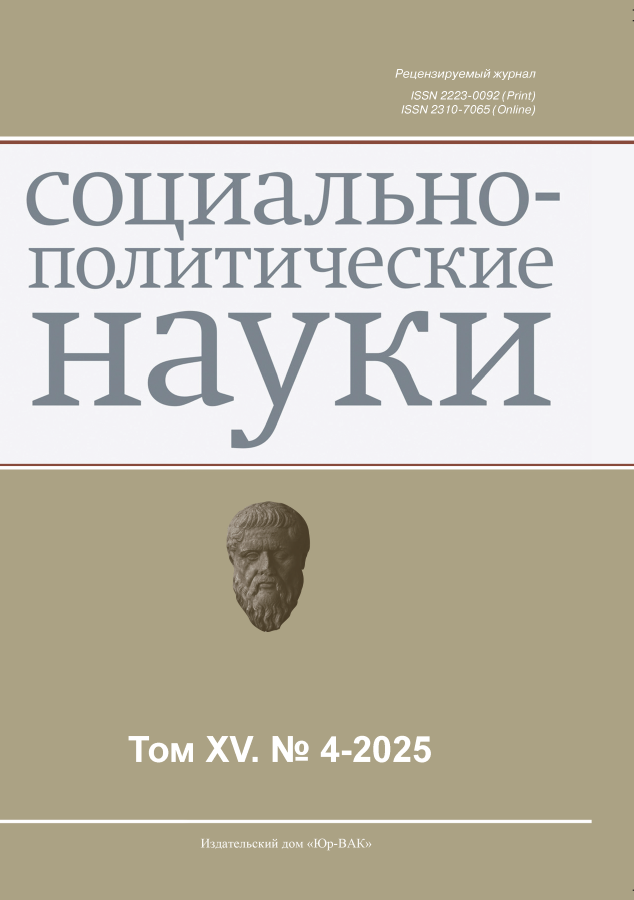Framework of identifying the features of Chinese and Eurasian regionalism: analysis of the “couple” phenomenon in the context of interregionalism theory
- Авторлар: Soldatova D.E.1,2
-
Мекемелер:
- St. Petersburg State University (SPbSU)
- Financial University under the Government of the Russian Federation
- Шығарылым: Том 15, № 4 (2025)
- Беттер: 180-188
- Бөлім: International Relations, Global and Regional Studies
- URL: https://journals.eco-vector.com/2223-0092/article/view/693247
- DOI: https://doi.org/10.33693/2223-0092-2025-15-4-180-188
- EDN: https://elibrary.ru/XHCIFZ
- ID: 693247
Дәйексөз келтіру
Аннотация
Today, major changes are taking place with transformational processes at the global and regional levels. The author notes that most of them do not fit into the classical schemes of regional integration and cannot be explained from the standpoint of classical theories of regionalism, especially in the context of the development of Sino-Russian relations. Such new phenomena as “connectivity,” “initiative,” “interregional” and “transregional” ties are a reflection of new trends in world development, new approaches to international cooperation and management in the global era. In this regard, the author sets the goal of the study – in the framework of identifying the features of Chinese and Eurasian regionalism, to analyze the phenomenon of “connectivity” in the context of the theory of interregionalism. As a result, the author comes to the results that “conjugation” acts as a new hybrid form of interregionalism, where it is not about the interaction of “regional block-regional block” or “regional block-great power,” but reflects the objective adaptation of regional actors to new conditions global competition and multi-level management. In practice, there is a tendency to replace “tough” integration alliances with softer, more flexible, situational and project-based formats of cooperation. That is, the phenomenon of “connectivity” is built into the modern logic of interregionalism as a manifestation of its evolution: from institutionalized block-block interaction to more flexible and adaptive block-initiative formats. “Connectivity” reflects the tendency of fragmentation and polycentricity of the world system. Thus, the phenomenon of “connectivity” in the context of interregionalism reflects the complex and multifaceted process of interaction between different regional blocs at the present stage. The theory of interregionalism offers a variety of explanations of the causes and mechanisms of connectivity, helping to further understand the dynamics of world processes and predict future trends.
Толық мәтін
Авторлар туралы
Deniz Soldatova
St. Petersburg State University (SPbSU); Financial University under the Government of the Russian Federation
Хат алмасуға жауапты Автор.
Email: DESoldatova@fa.ru
applicant, senior lecturer, Department of Legal Regulation of Economic Activity
Ресей, Saint Petersburg; MoscowӘдебиет тізімі
- Zabella A.A., Kanunnikov E.V., Katkova E.Yu. The Silk Road Economic Belt: Stages of development, main problems, and prospects. International Relations. 2019. No. 2. Pp. 135–146. (In Rus.)
- Lagutina M.L. The global region as an element of the 21st century world political system. Comparative Politics. 2015. No. 2 (9). Pp. 16–21. (In Rus.)
- Lagutina M.L., Mikhailenko E.B. Regionalism in the global era: A review of foreign and Russian approaches. RUDN University Bulletin. Series: International Relations. 2020. Vol. 20. No. 2. Pp. 261–278. (In Rus.)
- Larin A.G. Convergence of the EAEU and the New Silk Road: opportunities and challenges for Russia. In: The new silk road and its significance for Russia. V.E. Petrovsky (ed.-in-chief), E.I. Safronova (ed.), A.G. Larin (comp.). Moscow: DeLi plus, 2016. Pp. 111–114.
- Mikhaylenko E.B. “Old” and “new" regionalism: A theoretical discourse. Course of lectures. manual. M.M. Lebedev (sci. ed.). ekaterinburg: Ural Publishing House. University, 2014. 116 p.
- Petrovsky V., Kulintsev Yu., Larionova A. et al. Conjugation of the EAEU and the BRI: Problems and prospects. RIAC Analytical Note. 2020. No. 29. URL: https://russiancouncil.ru/papers/EAEU-BRI-PolicyBrief29.pdf (data of accesses: 20.07.2025).
- Skriba A.S. The conjunction of the EAEU and the Silk Road Economic Belt: The interests of the participants and the challenges of implementation. Bulletin of International Organizations: Education, Science, New Economy. 2016. Vol. 11. No. 3. Pp. 67–81. (In Rus.)
- Qiu Xiaofen. “The Silk Road Economic Belt” in the context of relations between China and the Russian Federation. Bulletin of the Peoples’ Friendship University of Russia. Series: Political Science. 2016. No. 3. Pp. 52–60. (In Rus.)
- Acharya A. Comparative regionalism: A field whose time has come? The International Spectator. Italian Journal of International Affairs. 2012. Vol. 47. Issue 1. Pp. 3–15.
- De Hanlon E.C. Old regionalism versus new regionalism in the context of the EU-Mercosur Agreement. Revista de la facultad de ciencias juridicas. 2007/2008. No. 12/13. Pp. 235–269.
- Söderbaum F. Early, old, new and comparative regionalism. The Scholarly Development of the Field. 2015. No. 64. P. 28.
Қосымша файлдар








